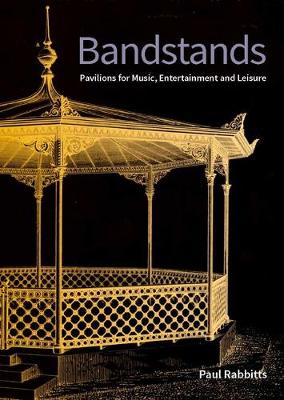Historic England
2 total works
However, the move from the bull baiting of 'Merrie England' to the ordered recreation provided by bandstands has never been fully comprehended. Likewise, the extent of changes in leisure and public entertainment and the impact of music at seaside resorts often revolved around the use of seaside bandstands, with the subsequent growth of coastal resorts. Music in public spaces, and the history and heritage of the bandstand has largely been ignored. Yet in their heyday, there were over 1,500 bandstands in the country, in public parks, on piers and seaside promenades attracting the likes of crowds of over 10,000 in the Arboretum in Lincoln, to regular weekday and weekend concerts in most of London's parks up until the beginning of the Second World War. Little is really known about them, from their evolution as 'orchestras' in the early Pleasure Gardens, the music played within them, to their intricate and ornate ironwork or art deco designs and the impact of the great foundries, their worldwide influence, to the great decline post Second World War and subsequent revival in the late 1990s. This book tells the story of these pavilions made for music, and their history, decline and revival.
The photographs are taken from the Historic England Archive, a unique collection of over 12 million photographs, drawings, plans and documents covering England's archaeology, architecture, social and local history. Pictures date from the earliest days of photography to the present and cover subjects from Bronze Age burials and medieval churches to cinemas and seaside resorts.
Bedfordshire is bordered on the north-east by Huntingdonshire, on the east by Cambridgeshire, on the south-east and south by Hertfordshire, and on the west by Buckinghamshire and Northamptonshire. It is one of England's smallest counties yet has much packed into its borders, from the industrial towns of Bedford, Luton, and Dunstable as well as the smaller rural towns of Leighton Buzzard, Ampthill and Biggleswade. Bedfordshire is also a place of immense history, from great churches and grand estates, such as Woburn, Luton Hoo and Wrest, a changing rural and industrial landscape, scarred by clay and sand extraction, to the wonderful Greensand Ridge escarpment, and the Grand Union Canal. The larger towns of Luton and Bedford have dominated the county for decades, with airports, hat-making, car manufacturing and education pre-eminent. Today, Bedfordshire is becoming more popular with commuters as transport links to London improve and those seeking better value move out of the capital to make their homes there.
This book provides a unique insight into Bedfordshire's past and will be of interest to residents, visitors and those wishing to discover more about the county's remarkable history.

